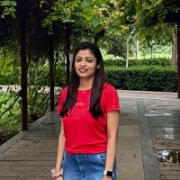

Informatica PowerCenter and SAP Data Services are prominent data integration tools in the enterprise ETL space. Informatica PowerCenter appears to have an upper hand due to its advanced transformation functions and versatility, although it requires SQL knowledge.
Features: Informatica PowerCenter is known for handling large data volumes, robust error handling, and various transformation types. It accesses data across multiple databases to streamline ETL tasks. SAP Data Services offers data quality transformations, efficient ETL processes, and strong SAP environment connectivity, focusing on SAP integration.
Room for Improvement: Informatica PowerCenter's interface and support for modern processing need enhancements, plus its metadata management could be simplified. SAP Data Services would benefit from improved web service integrations, more user-friendly features, and support for various data formats.
Ease of Deployment and Customer Service: Both products are mainly deployed on-premises, with cloud and hybrid options. Informatica PowerCenter generally receives good feedback for effective technical support, while SAP Data Services is criticized for its less responsive support affecting satisfaction.
Pricing and ROI: Informatica PowerCenter is known for its high cost, justified by its comprehensive features and robust ROI for complex integrations. SAP Data Services is also costly but offers value with SAP system integration, providing substantial benefits for enterprises heavily investing in SAP solutions.
It also plays a vital role in revenue calculations, net asset valuations, and other key factors that support customer data and investment data pipelines.
SAP is indeed good at all this now, with so many components such as SAP Signavio, SAP EINS, SAP Work Zone, SAP ALM, Cloud ALM, SAP public cloud, SAP private cloud, and BTP, all of which are essential to meet the latest cutting-edge technologies.
I like the technical support provided by Informatica.
I have occasionally needed to communicate with the technical support of Informatica PowerCenter, especially when raising cases for complex mappings and performance optimization to identify bottlenecks in transformations.
If you keep a high priority issue, such as a production impact, they certainly come and address it in no time.
Unlike level one where they basically search for the notes and provide responses, level two and level three are much better.
In the cloud, scaling up and down becomes easy when working with cloud providers.
For scalability, I would rate Informatica PowerCenter between eight to nine.
If I were to rate it from one to 10, I would say it has a nine to 10 for scalability.
Informatica PowerCenter is stable and can scale well.
The product is very stable with very few issues encountered in production.
I would rate the stability of SAP Data Services as very stable, a ten.
With Informatica PowerCenter, I am looking for an AI interface that looks at the underlying data model of the databases and the metadata of the tables, allowing the developer to provide instructions on what data sources to connect to and how to apply or create Transformations.
Informatica Cloud and its support becomes quite expensive for the organization compared to peers such as SnapLogic or Netezza, which offer lower pricing.
Utilizing more stored procedures from Oracle databases in an easy way would significantly boost performance.
SAP Data Services does handle integration with third-party systems.
Now, they are coming up with many pricing options, which is tricky; they offer one thing for free, but charge for nine others.
The documentation is not up to the mark.
The price of Informatica PowerCenter is high, especially for small and medium-sized businesses.
I find that the pricing and licensing for Informatica PowerCenter align with its quality.
The system supports real-time integration, which is essential for many of my tasks.
The functions in Informatica PowerCenter that I have found most valuable are the way it manages the volume of data, the push down optimization, and the performance aspects of it, mostly related to parallelism techniques.
The most valuable features of Informatica PowerCenter that I have found so far include transformations, the ease of connectivity with different source systems, and the parameter files.
SAP is indeed good at all this now, with so many components such as SAP Signavio, SAP EINS, SAP Work Zone, SAP ALM, Cloud ALM, SAP public cloud, SAP private cloud, and BTP, all of which are essential to meet the latest cutting-edge technologies.
SAP Data Services is mainly used for extraction of data, and it works with all databases.
It remains a fast data-moving tool, faster than most new ones.
| Product | Market Share (%) |
|---|---|
| Informatica PowerCenter | 3.7% |
| SAP Data Services | 1.5% |
| Other | 94.8% |

| Company Size | Count |
|---|---|
| Small Business | 15 |
| Midsize Enterprise | 10 |
| Large Enterprise | 72 |
| Company Size | Count |
|---|---|
| Small Business | 13 |
| Midsize Enterprise | 5 |
| Large Enterprise | 36 |
Informatica PowerCenter is a data integration and data visualization tool. The solution works as an enterprise data integration platform that helps organizations access, transform, and integrate data from various systems. The product is designed to support companies in the full cycle of a project, from its initial rollout to critical deployments. Informatica PowerCenter allows developers and analysts to collaborate while accelerating the work process to deploy projects within days instead of months.
The Advanced edition of the product provides an additional real-time engine which allows companies to have always-on enterprise data integration. This ensures seamless collaboration and increment of data lineage visibility and impacts analysis.
The Premium edition of the solution offers an early warning system that detects unexpected behaviors or incorrect utilization of resources in the workflows and alerts companies in the case that these occur. This version of the product also offers automatic data validation, which ensures data accuracy and reduces testing time and expenditure of resources for by up to 90%.
Informatica PowerCenter Features
The product provides users with various features which allow them to execute data integration initiatives such as analytics, data warehousing, data governance, consolidation, and application migration. The features of the solution include:
Informatica PowerCenter Benefits
The benefits of using Informatica PowerCenter include:
Reviews from Real Users
Yahya T., a developer and architect at L'Oreal, says the product is stable, provides good support, and integrating it with other systems is very fast.
Mohamed E., a senior manager for Data management and data governance at a tech company, says PowerCenter is stable, mature, and offers flexibility in building the pipeline and has a drag-and-drop mode because it's GUI-based; technical support is brilliant.
SAP Data Services is a top-ranking data integration and data quality tool. This is a product that aims to provide its users with effective access to their data in order to transform it and connect it to various business processes. SAP Data Services offers companies detailed data insights which improve decision-making and make company operations more effective.
Organizations can increase the value of their structured and unstructured data with the functionalities of this product regarding data integration, quality, and cleansing. Through various components such as:
the product transforms data into a ready-to-use resource for business insights.
Some of the key components of SAP Data Services include:
Through these components, the product allows its clients to access and integrate data sources and targets with native connectors. Users can derive meaning from unstructured text data, match data to reduce duplicates, and see the impact of data quality issues. The tool also offers the option to enable parallel processing, bulk data loading, and grid computing for high-volume data loads.
SAP Data Services Features
The solution has different features for data integration, data quality, data profiling, and processing of text data. Using these features, clients can manage their company's data easily and achieve excellent results by optimizing it. Some of the product’s features include:
SAP Data Services Benefits
This solution offers various benefits to its clients regarding the efficient operation of their data. The key benefits of SAP Data Services include:
Reviews from Real Users
According to Michael Lutz, senior data warehouse developer at Fox Chase Cancer Center, SAP Data Services is a powerful tool that does a lot.
An associate consultant at a consultancy says the tool is easy to use, simple to implement, and offers very good mapping capabilities.
We monitor all Data Integration reviews to prevent fraudulent reviews and keep review quality high. We do not post reviews by company employees or direct competitors. We validate each review for authenticity via cross-reference with LinkedIn, and personal follow-up with the reviewer when necessary.